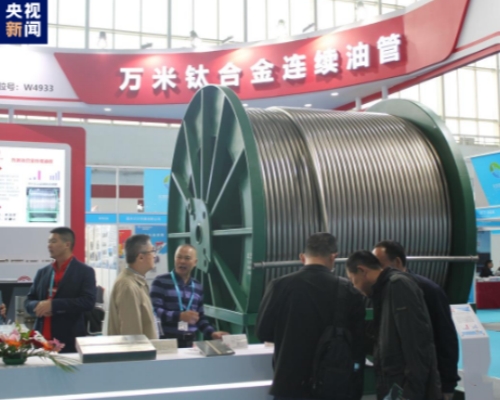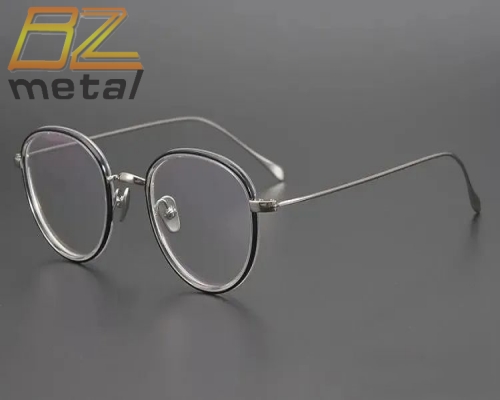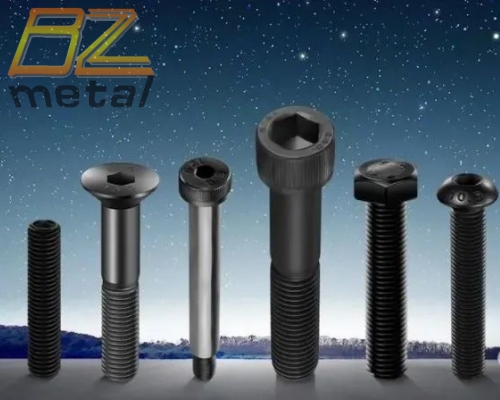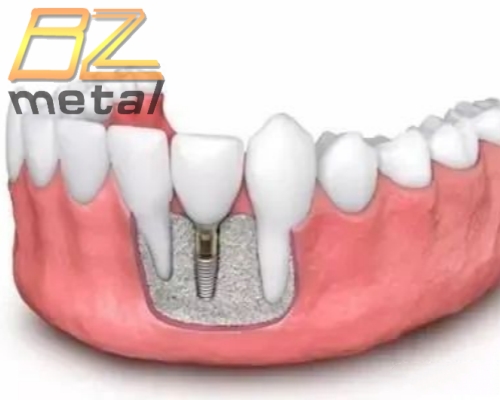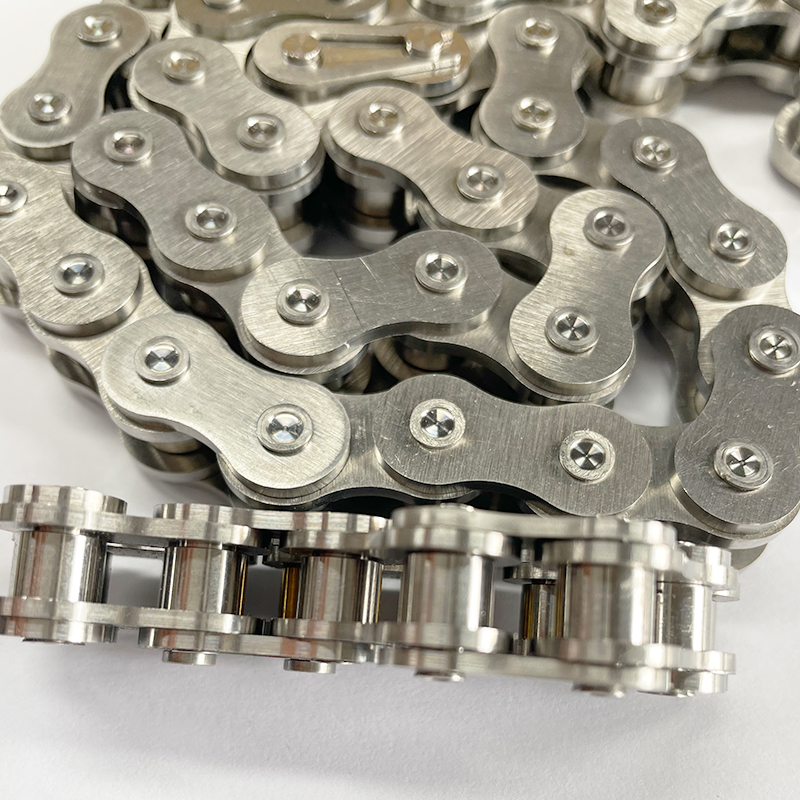3D Printing Enables Alloy Design To Show Excellent Performance
3D Printing Enables Alloy Design To Show Excellent Performance
A study led by scientists from the City University of Hong Kong used additive manufacturing (often referred to as 3D printing) to successfully develop a super-strong, highly ductile, and ultra-light titanium-based alloy. Their discovery has opened up a new way to design alloys with unprecedented structure and properties for various structural applications.
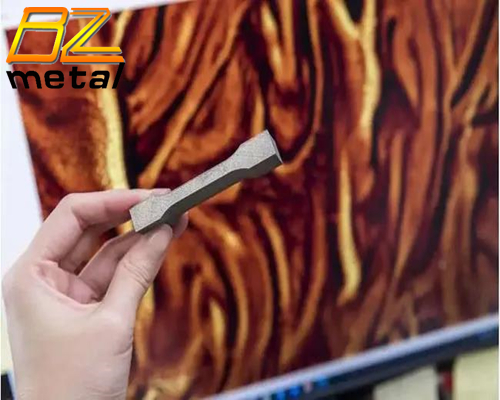
The new type of titanium alloy developed by the City University of Hong Kong using 3D printing technology has a lava-like microstructure, which gives it excellent mechanical properties. Source: City University of Hong Kong
The research team was led by Professor Liu Jiajun, a distinguished professor in the School of Engineering of the Hong Kong Polytechnic University and a senior researcher at the Hong Kong Institute for Advanced Study of the City University of Hong Kong. The experiment was completed by Dr. Zhang Tianlong, a postdoctoral fellow in the Department of Materials Science and Engineering. Their paper was recently published in the well-known scientific journal “Science”. The title of the paper was "In situ design of advanced titanium alloys for concentration regulation through Additive Manufacturing". Way Kuo, President of City University, also participated.
1) 3D printing: Not Just A Molding Technology
Most people believe that 3D printing is a revolutionary technology that can produce machine parts with complex shapes in one step. “However, we revealed its important potential in designing materials, rather than simply designing geometric figures,” Dr. Zhang said. Earlier this year, he completed his doctorate at City University under the guidance of Professor Liu.
Metallurgical scientists tend to believe that the lack of uniformity in alloy composition is undesirable, because it can lead to poor properties, such as brittleness. In the additive manufacturing process, how to eliminate unevenness in the rapid cooling process is one of the key issues. However, Dr. Zhang's previous modeling and simulation studies have found that there is a certain degree of inhomogeneity in the components, which can actually produce unique inhomogeneity microstructure, thereby improving the performance of the alloy. Therefore, he tried to use additive manufacturing technology to turn these simulation results into reality.
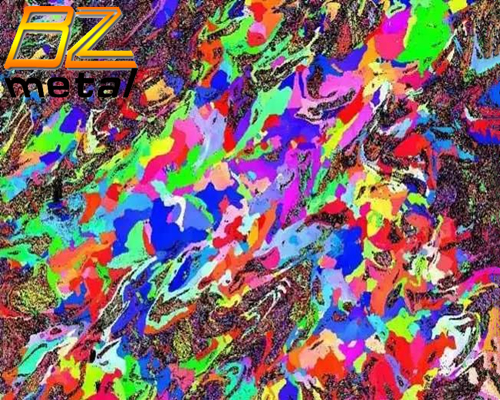
2) Uniquely Designed Microstructure
“The unique characteristics of additive manufacturing provide us with greater freedom to design microstructures,” explained Dr. Zhang, who is also the first author of this paper. “Specifically, we have developed a partial homogenization method to produce alloys with micron-level concentration gradients with the help of 3D printing technology, which is impossible to achieve with any traditional material manufacturing method. ”
The method they proposed includes melting and mixing two different alloy powders and stainless steel powders using a focused laser beam. By controlling parameters such as laser power and scanning speed during the 3D printing process, the team successfully created the uneven composition of the elements in the new alloy in a controlled manner.
Professor Liu said: "In addition to the use of additive manufacturing, the composition of the two powder mixtures is another key to creating an unprecedented high metastable lava-like microstructure in the new alloy. ” "These unique microstructures bring the highest mechanical properties, giving the alloy very strong toughness and light weight. ”
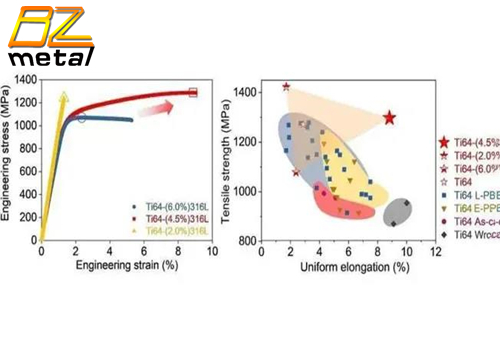
3) New Alloy: 40% Lighter, Super Strength
Generally speaking, stainless steel weighs 7.9grams per cubic centimeter, while the weight of the new alloy is only 4.5 grams per cubic centimeter, which is about 40% lighter. In their experiments, titanium alloys with lava-like tissues showed high tensile strength of ~1.3 gigapascal, with a uniform elongation of about 9%. It also has an excellent work hardening capacity of more than 300 MPa, which ensures a huge safety margin before fracture and is very useful in structural applications.
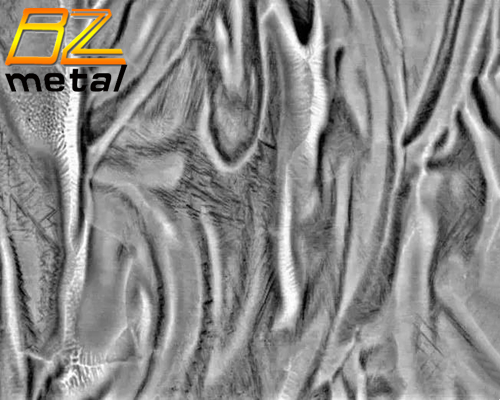
Professor Liu said: "These excellent properties have good structural application prospects in various situations, such as aerospace, automotive, chemical and medical industries. ”
He added: "As the first team to use 3D printing technology to develop new alloys with unique microstructure and properties, we will further apply this design concept to different alloy systems and further explore other properties of new alloys. ”

